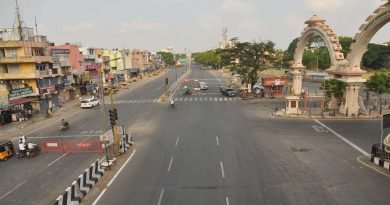Mutual Disengagement Of Indian, Chinese Troops Begins: Government Sources
NEW DELHI: Indian and Chinese troops have begun mutual disengagement in some areas of eastern Ladakh ahead of the next round of military talks scheduled tomorrow, government sources said on Tuesday.
Top military talks are to be held in the ‘Hot Springs’ area of eastern Ladakh on Wednesday.
Sources say ahead of that, a “significant” number of Chinese troops has withdrawn but there is no exact number. Except the fingers region in Pangong Tso, Chinese troops have started withdrawing 2 to 3 km, they say.
Talks between the two armies are to be held this week at multiple locations including Patroling point 14 (Galwan area), Patrolling point 15, and Hot Springs area, ANI quoted government sources as saying.
Because of the talks in the next few days, the Chinese Army has pulled back its troops from some areas, they said.
The sources said to reciprocate the Chinese disengagement, the Indian side also brought back some of its troops and vehicles from these areas.
Indian military teams are already in Chushul to engage the Chinese in talks and are coordinating with the senior officials in this regard.
On Monday, Defence Minister Rajnath Singh said India wants a resolution of the decades-old border issue with China “as soon as possible”. He described as “positive” last week’s high-level military dialogue between the two sides on the face-off in eastern Ladakh.
In a major effort to end the row, Lt General Harinder Singh, the general officer commanding of Leh-based 14 Corps, and Commander of the Tibet Military District Maj Gen Liu Lin held an extensive meeting on Saturday.
In a statement, the external affairs ministry said on Sunday the meeting took place in a “cordial and positive atmosphere” and that both sides agreed that an “early resolution” of the issue would contribute to the further development of the relationship between the two countries.
In its comments, the Chinese Foreign Ministry said both the countries have agreed to work to maintain peace along the Line of Actual Control and resolve the standoff through talks.
Tension between the two sides sharply escalated after reports of skirmishes between soldiers in the Pangong Lake region on May 5 and May 6.
According to sources quoted by Press Trust of India, the Chinese Army has been gradually ramping up its strategic reserves in its rear bases near the LAC by rushing in artillery guns, infantry combat vehicles and heavy military equipment. The trigger for the face-off was China’s stiff opposition to India laying a key road in the Finger area around the Pangong Tso Lake besides the construction of another road connecting the Darbuk-Shayok-Daulat Beg Oldie road in Galwan Valley, PTI said quoting sources.
After the standoff began, the Indian military leadership decided that Indian troops would adopt a firm approach in dealing with the aggressive posturing by the Chinese troops in all disputed areas of Pangong Tso, Galwan Valley, Demchok and Daulat Beg Oldie.
(NDTV)



